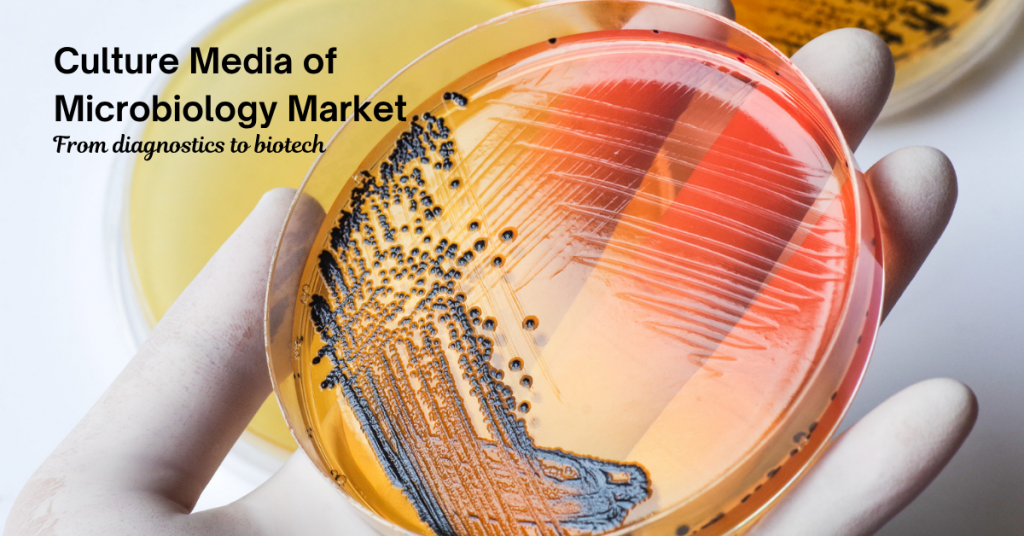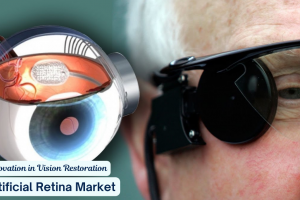
Market Overview
The global culture media market is witnessing steady expansion, fueled by increasing microbiological applications across industries. In 2024, the market size is valued at USD 5,860 million and is projected to reach USD 9,723 million by 2032, growing at a CAGR of 6.47%. As healthcare, agriculture, and environmental sciences converge with advanced microbial techniques, the demand for specialized media types continues to surge.
Culture media are essential for cultivating microorganisms under controlled conditions, enabling researchers and professionals to identify pathogens, test food safety, or develop new biopharmaceuticals. Whether it’s synthetic, semi-synthetic, or complex natural formulations, each type plays a pivotal role in the detection, diagnosis, and development pipeline.
Biotech firms and academic labs alike are transitioning toward selective and differential media to enhance precision and speed. Governments and private institutions are also increasing investments in R&D infrastructure, especially in emerging markets, to improve diagnostic capabilities and support innovation.
As automation becomes integral in laboratory workflows, ready-to-use media formats are being increasingly adopted to minimize contamination and reduce manual preparation time. This shift toward convenience and accuracy is significantly shaping the market’s next growth phase.
Read full report: https://www.credenceresearch.com/report/culture-media-of-microbiology-market
Market Drivers
Growing Applications in Agricultural Microbiology
The increasing need for sustainable farming practices is boosting demand for microbial soil analysis. Culture media are essential in isolating beneficial bacteria and fungi used in biofertilizers and pest control. As organic farming gains traction, culture media support this shift through microbial profiling and soil health testing. Laboratories and agri-tech companies are investing in targeted microbial culture systems to enhance crop yield. This trend is likely to grow as climate-resilient agriculture becomes a policy priority in several regions.
Emergence of Synthetic Biology
The rise of synthetic biology is revolutionizing genetic engineering and metabolic design. Scientists use engineered microorganisms in culture media to create biofuels, biodegradable plastics, and designer drugs. This cutting-edge research fuels demand for high-performance, customized media that support precise microbial growth. Universities and biotech startups are particularly active in developing these innovative applications. The culture media market is expected to benefit significantly from ongoing advancements in genome editing technologies.
Increasing Hospital-Acquired Infections
Hospitals face rising cases of nosocomial infections, demanding more rigorous microbial surveillance. Culture media help isolate pathogens from hospital surfaces, equipment, and patient samples. Regular monitoring reduces cross-contamination and improves infection control, thereby increasing reliance on high-quality culture products. With antimicrobial resistance on the rise, precise identification of infectious agents becomes essential. As a result, healthcare facilities are enhancing their diagnostic workflows, driving media consumption.
Expansion of Global Food Supply Chains
With globalization of food trade, the need for standardized food testing has intensified. Culture media are crucial in monitoring spoilage organisms, pathogens, and hygiene in processing environments. Their usage is vital for exporters meeting international food safety benchmarks and certifications. Government agencies and multinational food companies are increasingly investing in microbial safety protocols. This dynamic is expanding the use of culture media across import-export hubs and regulatory labs.
Market Challenges
Short Shelf-Life of Prepared Media
Many ready-made culture media have a limited shelf life, especially under non-ideal storage conditions. This leads to higher wastage and frequent reordering, creating logistical and cost challenges for laboratories operating in remote or resource-limited settings. Even large institutions face efficiency losses due to stock rotation constraints. The requirement for cold storage and strict inventory control adds complexity. Addressing these issues requires improved formulation stability and packaging innovations.
Scarcity of Skilled Microbiologists
Despite rising demand, there is a shortage of skilled microbiologists capable of handling advanced culture media. This talent gap restricts optimal use of media and delays test results, particularly in diagnostics labs requiring rapid turnaround. Training new personnel takes time and resources that smaller labs often cannot afford. This shortage also affects quality assurance in sectors such as food safety and pharmaceuticals. As testing complexity increases, the skills gap becomes more pronounced.
High Customization Cost for Niche Applications
While tailored media offer better performance for specific organisms, customization incurs additional R&D and production costs. Small-scale users, including research labs and startups, often find it financially burdensome to invest in low-volume, niche-specific media solutions. The lack of economies of scale limits accessibility to specialized media types. Manufacturers are also hesitant to take on low-margin custom projects without assured demand. This presents a barrier to entry for innovation-driven end users.
Inadequate Cold Chain Infrastructure
Temperature-sensitive media require uninterrupted cold chain logistics. In many developing regions, lack of refrigerated transport and storage hampers quality maintenance, leading to product spoilage and underperformance in critical microbiological tests. Without proper infrastructure, product reliability declines significantly. This limits market penetration in rural areas and emerging economies. Addressing this challenge will require investments in logistics networks and alternative packaging technologies that enhance shelf stability.
Market Opportunity
Surge in Rapid Microbial Detection Kits
Rapid test kits incorporating pre-poured media plates are seeing a surge in demand. These are ideal for field testing in food safety, pharmaceuticals, and clinical diagnostics. Their ease of use and reliability create vast opportunities, especially in decentralized settings. Startups are actively exploring mobile-compatible detection systems using such kits. Growth in point-of-care testing is likely to further accelerate adoption across both developed and developing markets.
Development of AI-Driven Incubation Platforms
Artificial intelligence is being integrated with incubators to monitor microbial growth patterns. These systems require compatible culture media formats that can be analyzed using image recognition and machine learning, creating a new niche in smart laboratory systems. AI-enabled platforms allow real-time feedback and reduce the need for manual observation. Media manufacturers that can develop standardized formats for such systems will gain a competitive advantage. This convergence of biotech and data science is expected to fuel future market growth.
Expansion of Space Microbiology Programs
NASA and other space agencies are investing in microbiology research to study microbial behavior in space. Culture media are used to analyze microbial resistance, mutation, and survival in zero-gravity conditions—opening up high-tech and specialized market segments. Private space companies are also joining this field, adding to the demand for customized media. These research efforts contribute to planetary protection, human spaceflight safety, and microbial bioprospecting. Though niche, the segment offers high-value innovation opportunities.
Eco-Friendly and Biodegradable Media Solutions
There is rising demand for eco-conscious media made from sustainable resources. Manufacturers are exploring biodegradable containers and plant-based nutrient sources to reduce environmental impact while meeting performance benchmarks. Regulatory authorities in several countries are encouraging greener alternatives through policy support. Research is also underway to replace traditional peptones and agar with renewable components. As sustainability becomes central to procurement decisions, this trend is likely to gain momentum.
Market Segmentation
By Media Type
- Solid Media
- Liquid Media
- Semi-Solid Media
By Application
- Clinical Diagnostics
- Pharmaceutical and Biotechnology
- Food and Beverage Testing
- Environmental Monitoring
- Academic Research
By Region
North America
- U.S.
- Canada
- Mexico
Europe
- UK
- France
- Germany
- Italy
- Spain
- Russia
- Belgium
- Netherlands
- Austria
- Sweden
- Poland
- Denmark
- Switzerland
- Rest of Europe
Asia Pacific
- China
- Japan
- South Korea
- India
- Australia
- Thailand
- Indonesia
- Vietnam
- Malaysia
- Philippines
- Taiwan
- Rest of Asia Pacific
Latin America
- Brazil
- Argentina
- Peru
- Chile
- Colombia
- Rest of Latin America
Middle East & Africa
- GCC Countries
- South Africa
- Rest of the Middle East and Africa
Regional Analysis
North America
The region continues to lead due to the strong presence of biotech and pharmaceutical giants. The U.S. shows high adoption of pre-poured and selective media across hospitals and research institutes. Canadian government initiatives in food microbiology further stimulate market growth. Both nations have advanced healthcare systems with robust lab networks, ensuring steady demand. Additionally, investments in synthetic biology and academic research further reinforce the region’s leadership in the culture media market.
Europe
European countries emphasize regulatory-compliant testing in both food and pharma sectors. Germany and the Netherlands are particularly active in culture media innovation, with regional suppliers focusing on ISO-accredited and automation-compatible media for diagnostics. The region benefits from EU-wide food safety regulations that promote microbial testing. Public-private partnerships are common in promoting biotech advancement. This ecosystem supports steady product development and international collaboration in microbial research.
Asia Pacific
APAC is growing rapidly due to increasing government funding for public health labs and biotech startups. Countries like South Korea and Singapore are integrating AI-enabled testing, requiring smart-compatible culture media formats. China and India also show strong potential with rising investments in academic research and healthcare infrastructure. Local manufacturers are scaling production to meet domestic and export demand. The region is emerging as both a consumer and producer in the global market.
Latin America
Market growth is supported by foreign investments and public-private partnerships in clinical diagnostics. Chile and Colombia are modernizing their agricultural labs, increasing the use of soil and water testing media. Brazil’s growing food export industry necessitates rigorous microbial testing across its supply chains. Despite infrastructure challenges, regional awareness around foodborne diseases is improving. Culture media suppliers are focusing on creating cost-effective solutions suited for these economies.
Middle East & Africa
The region shows increasing demand in infectious disease testing. Countries like UAE and Egypt are investing in modern healthcare infrastructure, including microbiology labs, while South Africa leads in environmental microbiology initiatives. International aid and health partnerships contribute to diagnostic lab development. Rising awareness around hospital hygiene is further boosting media consumption. While still an emerging market, MEA holds long-term growth potential driven by public health needs and regulatory reforms.
Top Companies
- Sartorius AG
- ATCC (American Type Culture Collection)
- Thermo Fisher Scientific Inc.
- Merck KGaA
- GE Healthcare Life Sciences
- Caisson Laboratories, Inc.
- Becton, Dickinson and Company (BD)
- HiMedia Laboratories Pvt. Ltd.
- Bio-Rad Laboratories, Inc.
- Corning Incorporated
Future Outlook
- Automation will dominate microbiological labs, driving the need for robotic-compatible media trays.
- Environmental microbiology will become mainstream, requiring air and water testing media.
- Investments in pandemic preparedness will sustain demand for clinical culture solutions.
- Emerging economies will fuel decentralization of diagnostics, increasing point-of-care media use.
- Media tailored for anaerobic and extremophile microbes will gain prominence.
- Partnerships between AI startups and media suppliers will generate new value chains.
- Bioplastic-based packaging will replace traditional media containers.
- Ready-to-use media for classroom and educational labs will see expansion.
- Hybrid testing models using culture plus molecular detection will be standardized.
- Remote monitoring of cultures via smart apps will reshape lab workflows.
Read full report: https://www.credenceresearch.com/report/culture-media-of-microbiology-market









